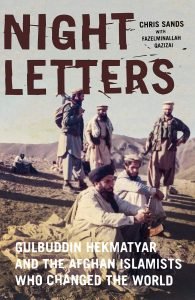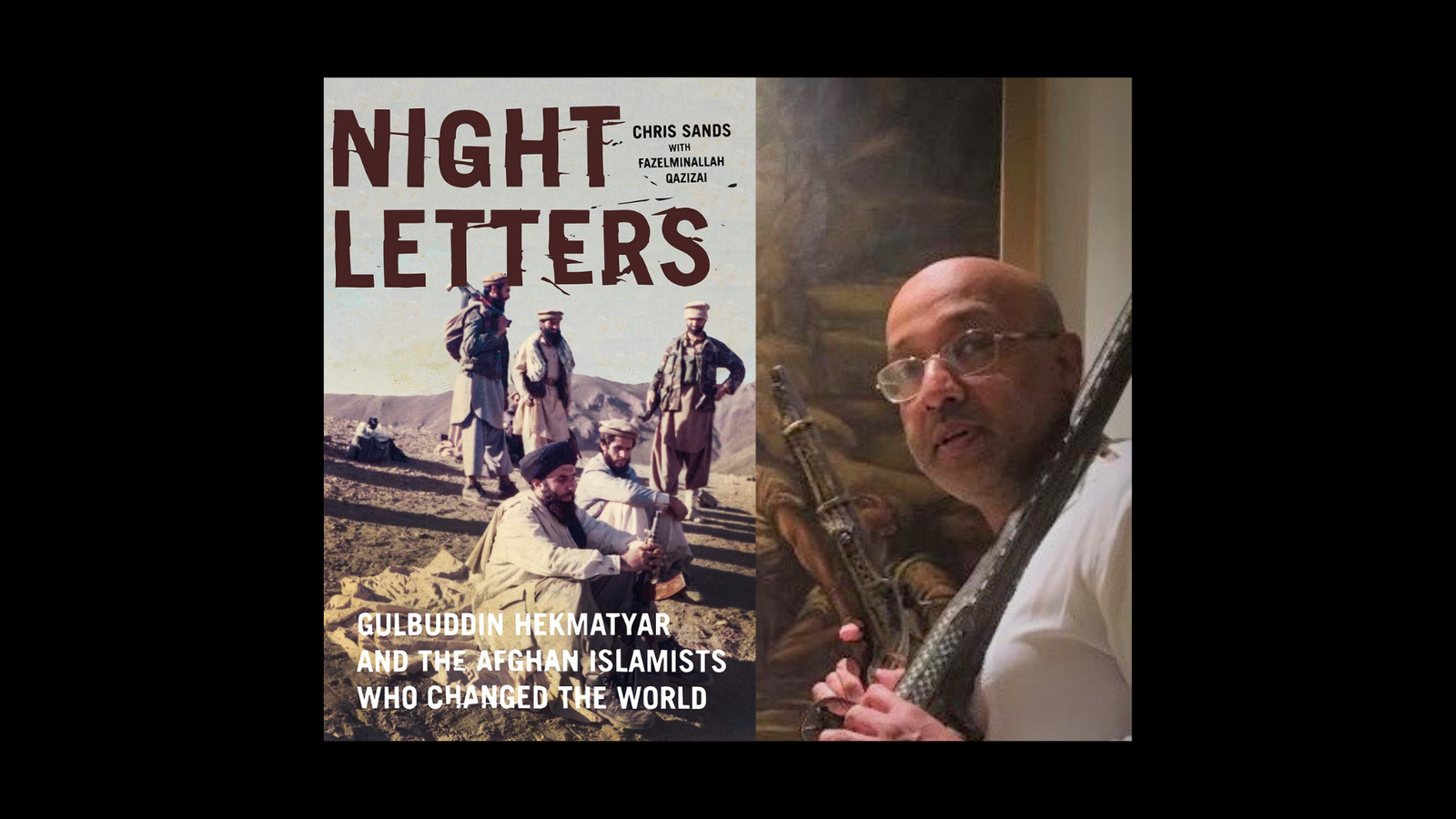This book is an examination of the rise of Gulbuddin Hekmetyar and his party Hisbe Islami Afghanistan. The Hisbe emerged in 1976 through the proselytising work amongst students of Professor Niazi who lectured on Islam at the Kabul University. Niazi was educated in Egypt at Al Azhar, and used his influence to spread the Muslim Brotherhood doctrines of Hassan Al Banna and Seyd Qutb in Afghanistan.
In the 1960s Zarnegar Park in Kabul saw the rise of political preachers for the Islamic movement as well as for the communists. Both groups fought in the park and at the Kabul University.
After the 1973 coup de’tat of President Daoud, the Islamic movement moved to initiate an insurrection against Daoud in 1975 with the assistance of Pakistan. However amongst the coup plotters were Rabbani and Hisbe’s trusted finance officer who unbeknown to Hekmetyar had back channels with the Daoud regime. These two amongst others undermined the coup by informing Daoud about it. The finance officer was later executed for his espionage and confessed that Rabbani had approved of his actions in advance. Rabbani was pro-negotiations with Daoud and believed that Daoud was a misguided Muslim who could be brought back to his senses. As a result tensions emerged between Hekmetyar on the one hand and Rabbani’s Jamiat Islami on the other.
After the 1978 Saur coup by communists, Afghanistan provided slightly more fertile ground for anti-Government resistance. In Kunar the Communist Governor massacred villagers suspected of aiding the armed resistance. This was at a time when the Afghan army officers were beginning to change sides to the anti-Government resistance. The Kunar Governor received a pleasant call from an Afghan General informing him of the good news that they had caught some ‘ikhwanis’ (Muslim brothers). The Governor replied he wanted to personally deal with them and flew eagerly in a helicopter to the General’s base. As the Governor stepped out of the helicopter demanding enthusiastically to interrogate the Ikhwanis, he was gunned down by the General’s troops who along with the General had switched sides to the anti-communist Mujahedin resistance.
As the Afghan communists struggled to control the state, this did not prevent the communists engaging in conflicts with their fellow comrades. The communist President Taraki was murdered and replaced by his US educated colleague Hafizullah Amin. Amin made overtures to Hekmetyar who like Amin was a Ghilzai to support his regime, but Amins’ days were numbered. The Soviet Secretary General Brezhnev was deeply offended that his protégé Taraki had been murdered and viewed Amin as a CIA agent and described Amin as a “bastard”.
Brezhnev had his revenge and Amin was killed in the December 1979 Soviet invasion. As war heated up Hisbe began to receive the lions’ share of weapons for the Afghan mujahideen from Pakistan. Hekmetyar realised that Hisbe could not continue to fight the Soviets as they had the Afghan communists. So Hekmetyar took a leaf out of the book of Iran’s Mujahedin e Khalq who conducted urban terrorism against supporters of the Islamic Republic. Accordingly Soviet troops browsing in Kabul whilst off duty would find themselves hunted down by Hisbe Mujahedin.
At the beginning of the Soviet invasion Ahmed Shah Massoud was forced to ask a Hisbe commander for support in 1980 as the Panjsher Valley came under pressure from Soviet attacks. The Hisbe support was generously provided. In one ambush that the Hisbe conducted in Panjshir Valley they killed five Soviet troops taking their weapons. However, bad feeling developed with Massoud’s men when they demanded the Hisbe hand over the weapons from the five dead Soviets and eventually the weapons were reluctantly shared between the two sides as a compromise measure. Later in another incident Massoud forces would rob Hisbe men of their weapons including a Makarov pistol which Massoud took to proudly wearing which incensed Hekmetyar.
Hisbe would move to try and isolate Massoud by cutting his supply line to the Panjsher. In return Massoud signed a temporary peace deal with the Soviets in 1982 and turned his attention to wipe out Hisbe commanders in Northern Afghanistan. The tensions between Hekmetyar’s Hisbe and Jamiat are described in detail in the book. As the Soviets were losing the conflict, they reached out to Massoud and offered him a Tajik buffer state in Northern Afghanistan since they feared a Hisbe takeover of Afghanistan. Massoud however believed he would be better served to wait and could capture the whole of Afghanistan.
In 1989 the Soviets had withdrawn and the Mujahdein of Hisbe attempted to seize control of Jalalabad. Massoud had promised to interdict supplies to Kabul on the Salang highway but did not uphold his promise. For this amongst other reasons the attack on Jalalabad was doomed to fail. The following year in 1990 General Tanai attempted a coup against the regime of Dr Najib supported by the Hekmetyar. The coup failed because Massoud used his influence amongst his supporters in the Afghan military to oppose Tanai. Massoud in 1992 allied with the Communist militia of General Dostum to seize power in Kabul. However, Hisbe forces had seized many ministries in Kabul including the Defence and Interior Ministry, but Massoud was supported by numerous Afghan generals and launched an attack on Hisbe in Kabul driving them out of the city but paving the way for civil war.
In 1993 the Hisbe sent their delegate into Kabul to take up the post of Prime Minister but real power remained in the hands of Massoud and Rabbani. Massoud had even attempted to thrice assassinate Sibgatullah Mojadedi the first Mujahedin President who took power in Kabul in 1992. Rabbani was to take power after Mojadedi for four months but once in the President’s seat, Rabbani did not want to give up power. Afghanistan’s Prime Minister Ustad Farid, belonging to Hekmetyar’s Hisbe Islami was a Tajik. Both Massoud and Rabbani suggested to Farid that he should ditch Hekmetyar and end centuries of what they termed were Pashtun domination. Ustad Farid however did not agree so civil war continued in Afghanistan between the various factions.
With the emergence of the Taliban in Kandahar in 1994, the Rabbani Govt supported the movement with money and arms. The Taliban wiped the Hisbe from the face of Afghanistan before pushing Rabbani out of Kabul and Hekmetyar into Iran. An unfortunate legacy of Hekmetyar’s was his granting of asylum to Bin Laden. Unknown to the Taliban Bin Laden was planning the 9/11 operation and informed his friend Hekmetyar that something big was in operation and he would need Hekmetyar’s help to flee Afghanistan.
After 9/11 and the US invasion of Afghanistan Bin Laden fled Kabul to Jalalabad, then to Tora Bora and onto Kunar with Hekmetyar’s assistance. In Kunar Bin Laden and Ayman Zawhiri were living in hiding with a Hisbe Islami commander until one day to their horror, Hekmetyar joined them and began publicising his presence to locals who flocked to meet Hekmetyar. Bin Laden and Zawhiri were forced to leave Kunar and eventually head to Pakistan.
For those interested in the Islamic movement’s history in Afghanistan as well as the role it played in inspiring Arabs across the globe to militancy should read this book. The book presents a valuable lesson in the dangers of nationalism, self-interested leaders who could not see the greater national interest.
 Chris Sands and Fazelminallah Qazizai
Chris Sands and Fazelminallah Qazizai
Hurst Publishers, 2019
Price £30
In march of 2020 Ahmed-Waleed Kakar and Sangar Paykhar had the pleasure of hosting co-author of the book as a guest of our podcast. Here is the video:
https://www.youtube.com/watch?v=uFCeFN4S74g

